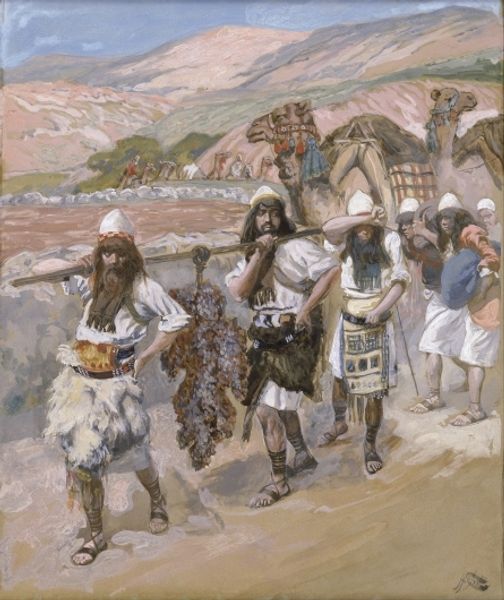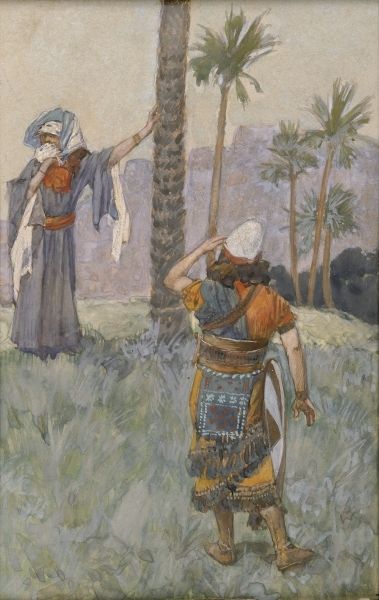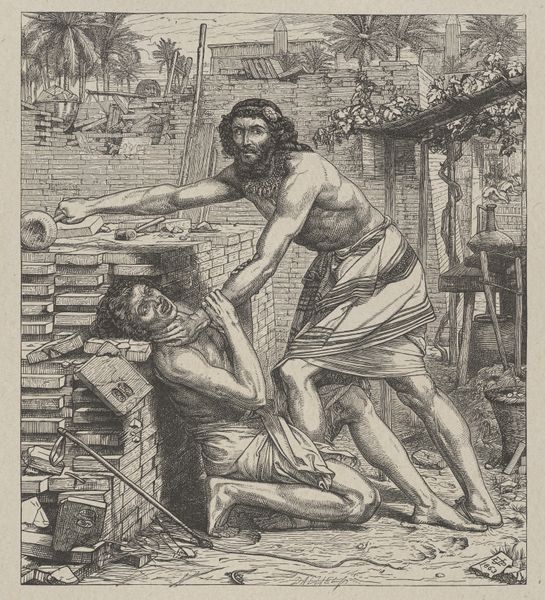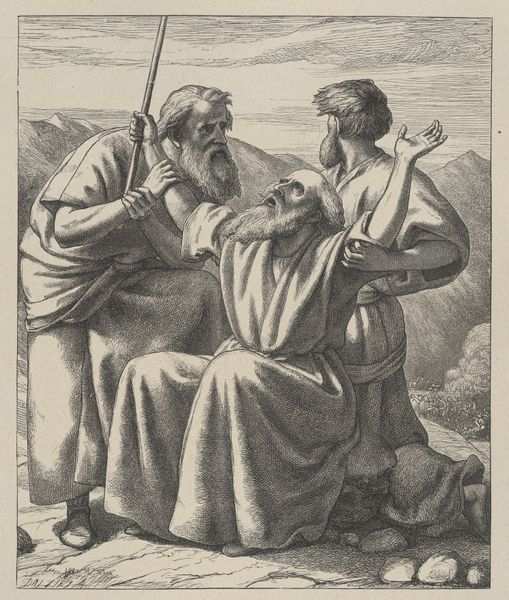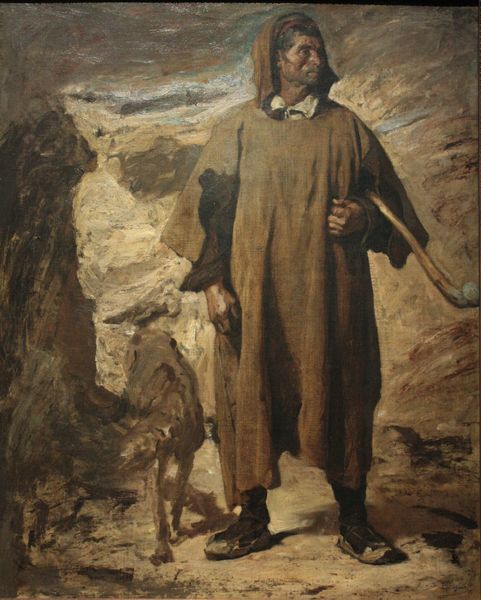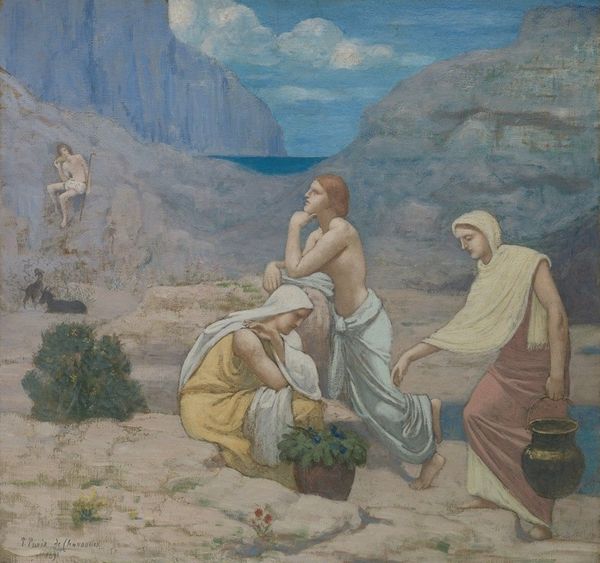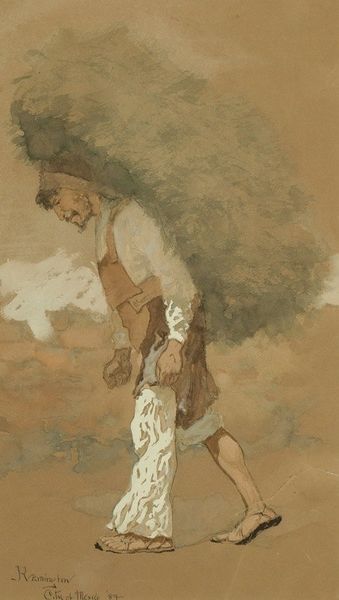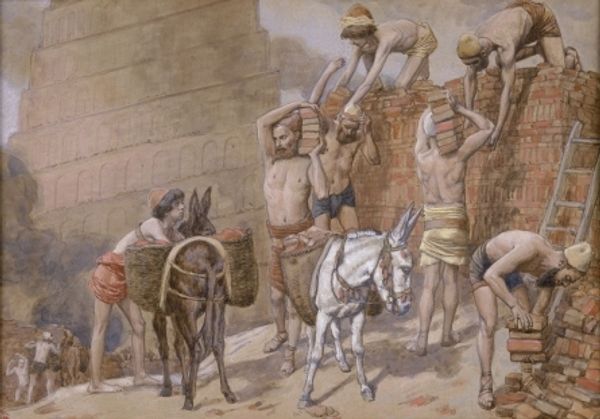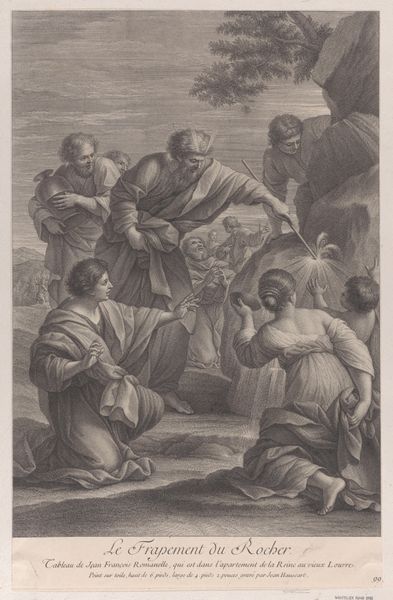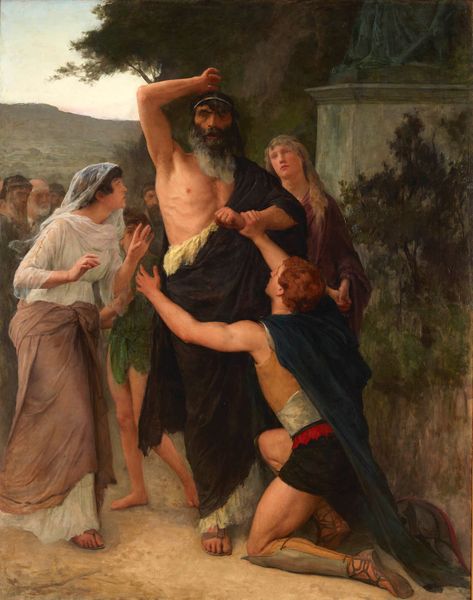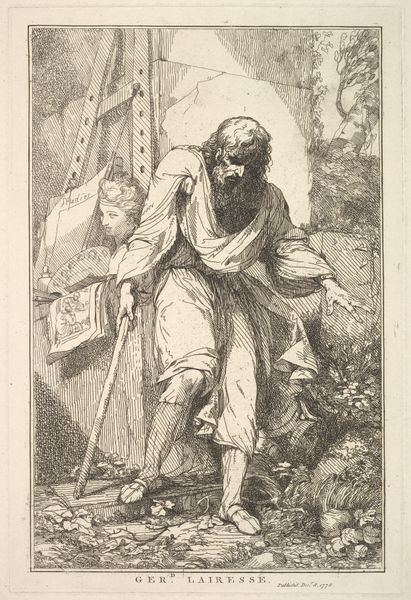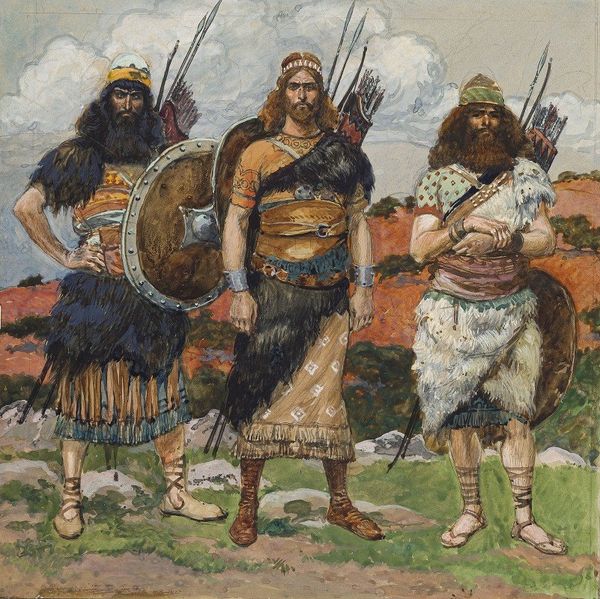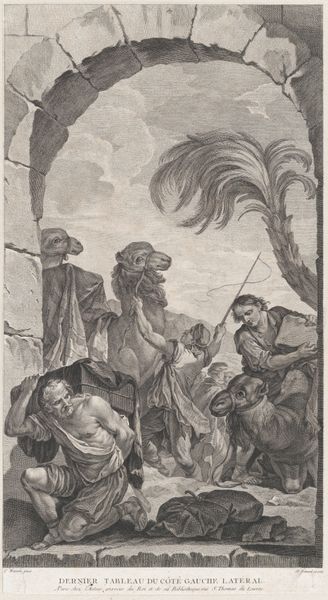
#
charcoal drawing
#
possibly oil pastel
#
oil painting
#
portrait reference
#
famous-people
#
acrylic on canvas
#
underpainting
#
animal drawing portrait
#
portrait drawing
#
portrait art
#
watercolor
Copyright: Public domain
Curator: Tissot’s “Isaac Bears the Wood for His Sacrifice,” created in 1902, strikes me as a haunting portrayal of anticipation. Editor: The watercolor technique lends itself well to the theme. You get this sense of parched earth, the bleaching sun, and the sheer weight bearing down. You almost feel the texture of that roughly hewn wood Isaac’s carrying. Curator: Indeed, and that physical burden certainly echoes the emotional and spiritual weight. The logs Isaac carries prefigure Christ carrying the cross in later iconography. He is himself, in that moment, the instrument of sacrifice. Editor: Tell me more about the wood itself. It is shaped through laborious effort, but what kind of wood? Where did it originate, and what kind of technology made the process of hewing it down possible? The history of such a common material holds untold context. Curator: While the type of wood might be ambiguous, it's likely locally sourced, emphasizing a direct connection to the land and available resources. More significant to me is the symbolic offering itself: the willing sacrifice, which reflects ideas of devotion across cultures, referencing purification rituals through fire. Think of Kali in Hinduism. The image of Isaac carries echoes beyond just Christianity. Editor: You can read the theme, undeniably. But look at how the watercolor’s diluted pigments render the figures. See the crude process of production. These materials, their deployment, they embody labor and context equally. How different would this scene feel if it was in oil? Curator: Undoubtedly the materiality impacts reception! And the use of watercolor softens what would be, if rendered differently, a terribly brutal narrative. But even through a muted palette, you can sense the fear and resolve battling within each figure's posture. Isaac’s downcast gaze contrasts sharply with Abraham's hardened expression. It makes it powerfully disquieting. Editor: Exactly. Consider also the role of paper. Watercolor is often cheaper. Consider the location. Did he use the landscape, the land around the figures, to extract raw pigments for production, integrating his own work into that geographic and socioeconomic sphere? These practicalities resonate meaningfully alongside any allegorical interpretations. Curator: Both the physical and metaphysical realms meet here in that sense, a point well-made. Ultimately, though the work invites discourse on its process, its real strength for me resides in the loaded depiction of figures steeped in myth, wrestling with impossible expectations. Editor: And perhaps in understanding how that very act of pictorial representation shaped and reshaped such powerful and prevailing archetypes.
Comments
No comments
Be the first to comment and join the conversation on the ultimate creative platform.
